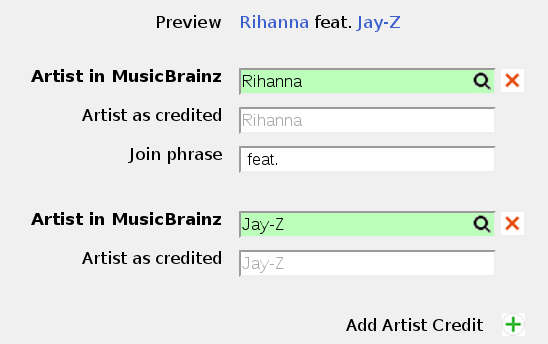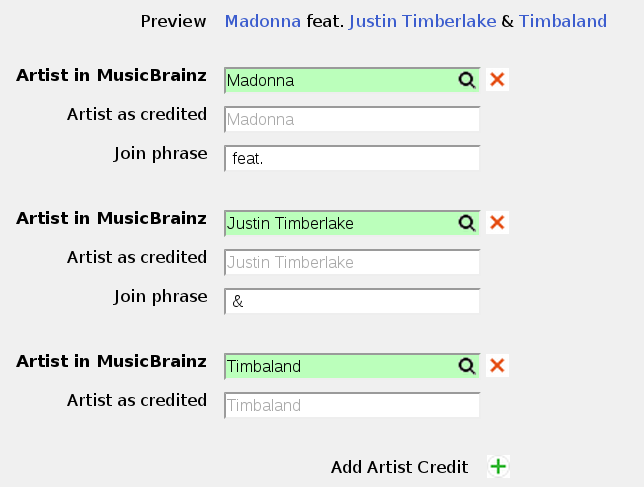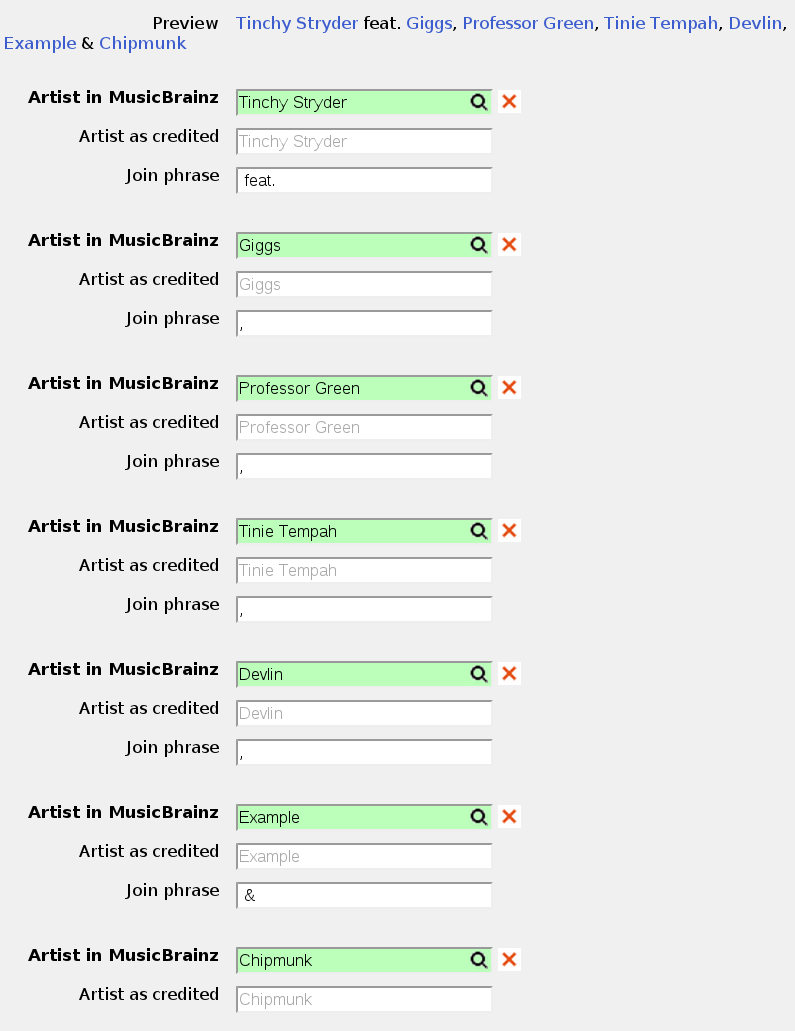Style/Artist Credits/Featured artists: Difference between revisions
From MusicBrainz Wiki
< Style | Artist Credits
Jump to navigationJump to search
No edit summary |
|||
| Line 1: | Line 1: | ||
{{Official style}} |
{{Official style}} |
||
This guideline applies to cases in which one or more artists are ''featured'' on a |
This guideline applies to cases in which one or more artists are ''featured'' on a track by another artist, but not equally as they would be in a [[Collaboration Relationship Type|collaboration]]. That is, they are given credit on the cover or track listing of a release by another artist in a manner which elevates their contribution above normal liner note credits. Often, the word "featuring" or "feat." precedes their name(s). |
||
== Guideline == |
== Guideline == |
||
Revision as of 14:44, 15 August 2011
| Status: This is an official style guideline. |
This guideline applies to cases in which one or more artists are featured on a track by another artist, but not equally as they would be in a collaboration. That is, they are given credit on the cover or track listing of a release by another artist in a manner which elevates their contribution above normal liner note credits. Often, the word "featuring" or "feat." precedes their name(s).
Guideline
- Fill out the artist credits for the primary artist(s) in the usual manner.
- Add a join phrase of ' feat. ' (note the surrounding spaces)
- Add the first featured artist.
- Add additional featured artists, each separated by ', ' (note the trailing space) and the final one separated by ' & ' (note the surrounding spaces).
- Add Relationships of the appropriate Relationship Class (usually Performance) to link to the featured artist(s') entries in MusicBrainz.
The use of artist credits has the advantage that the recording is listed under all credited artists, not just the primary ones. In example three below, this makes the recording appear under all seven artists rather than just the one.
Details
- Featured artists tend to be performers, but they can also be contributors to the technical production process (mixers, producers, record engineers, etc.), remixers and others. The different roles are explained in Compilation Relationship Class, Composition Relationship Class, Production Relationship Class, Remix Relationship Class. Note, that composers are often the main artists of classical releases (see ClassicalStyleGuide) and remixers or compilers can also be main artists if they fit into 1.
Examples
The following examples show how to turn a track/artist pair into a track name and artist credit.
- Recording: "Umbrella" by Rihanna featuring Jay-Z is credited to Rihanna feat. Jay-Z as follows:

- Recording: "4 Minutes" by Madonna featuring Justin Timberlake & Timbaland is credited to Madonna feat. Justin Timberlake & Timbaland as follows:

- Recording: "Game Over" by Tinchy Stryder featuring Giggs, Professor Green, Tinie Tempah, Devlin, Example & Chipmunk is credited to Tinchy Stryder feat. Giggs, Professor Green, Tinie Tempah, Devlin, Example & Chipmunk as follows:

- The release group for "Umbrella" is credited in the same way as the recording in example 1.
- The release group for "4 Minutes" is credited in the same way as the recording in example 2.